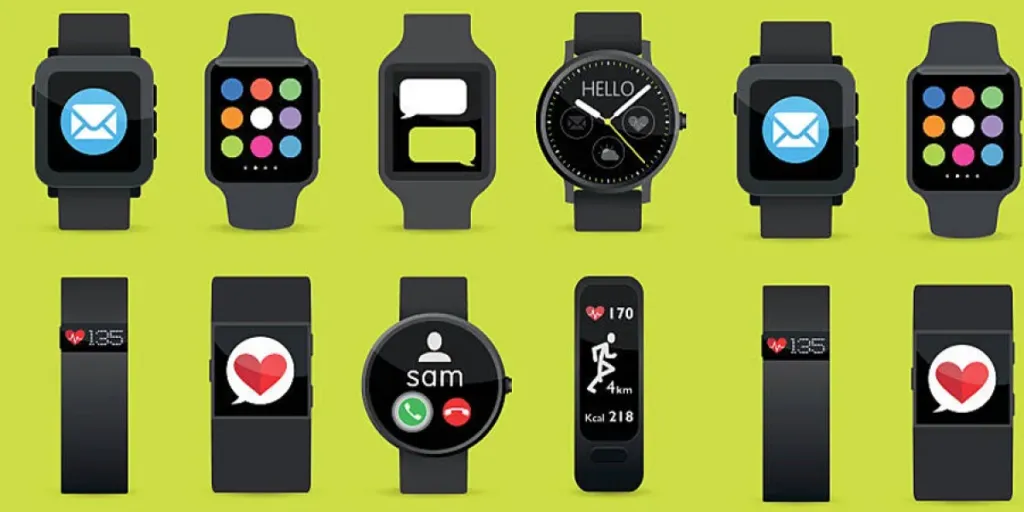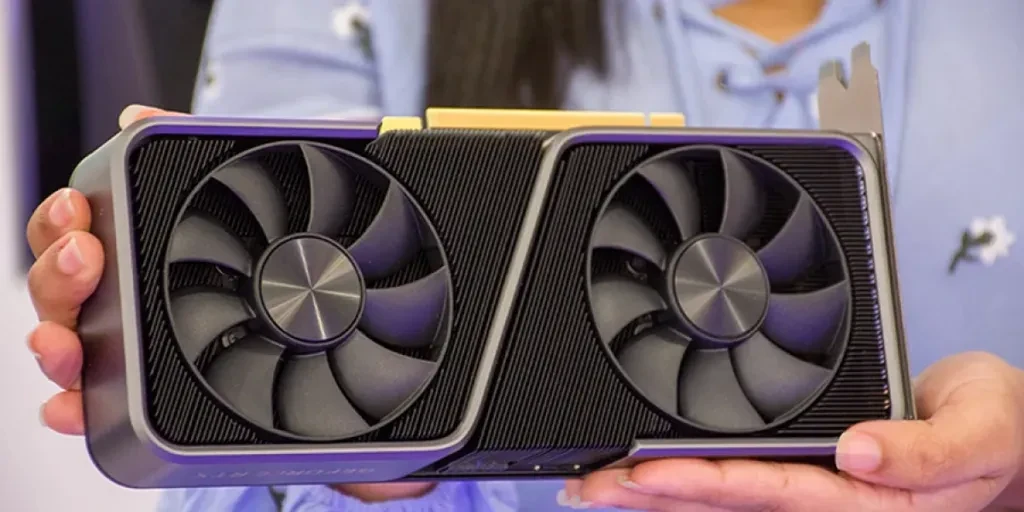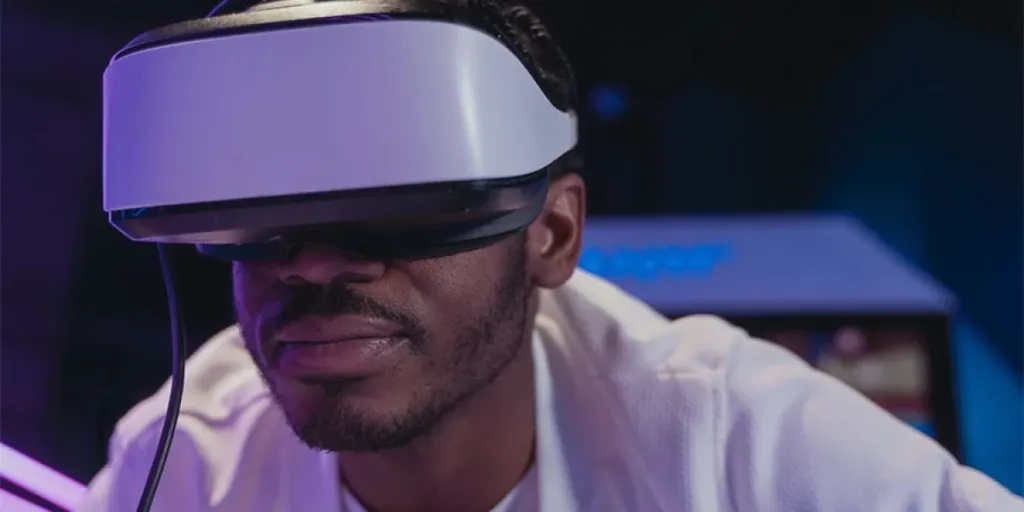If you lean forward, curved gaming monitors will bend the race track around your eyes. Each turn feels real. Flat screens stay flat, whereas curved monitors wrap around you, keep you locked in, and make hours of play fly by. Buyers crave that thrill now, which is why they are willing to pay more for the ultimate gaming experience.
This guide provides everything retailers need to know to stock the best curved gaming monitors for their buyers in 2025.
Table of Contents
Why the curved gaming monitor market is booming right now
5 types of curved gaming monitors retailers can stock
1. Full-HD curved gaming monitor
2. QHD mid-size curve
3. Ultrawide curve
4. Super-ultrawide curve
5. OLED Curve
What to consider when choosing a curved gaming monitor
1. Pick a curve radius that one’s eyes can handle
2. Make the motion seamless
3. Check picture quality
4. Check the ports
5. Make sure the stand fits the desk
Rounding up
Why the curved gaming monitor market is booming right now
A recent report revealed that consumers globally spent about USD 4.5 billion on curved gaming monitors, and analysts say the figure could climb to roughly USD 8.2 billion by 2033, growing at a compound annual growth rate (CAGR) of about 7.6% per year.
Three main reasons drive this steady climb of these gaming monitors. First, e-sports keeps exploding, so serious players want a screen that feels like an arena seat, and a curved panel delivers that pull. Second, big brands are slashing prices during frequent deal events, letting more buyers afford premium curved models. And finally, many work-from-home users now choose one wide, curved screen for spreadsheets by day and gaming marathons by night. Together, these forces keep demand rising and give small shops a clear chance to profit by stocking curved gaming monitors.
5 types of curved gaming monitors retailers can stock
1. Full-HD curved gaming monitor
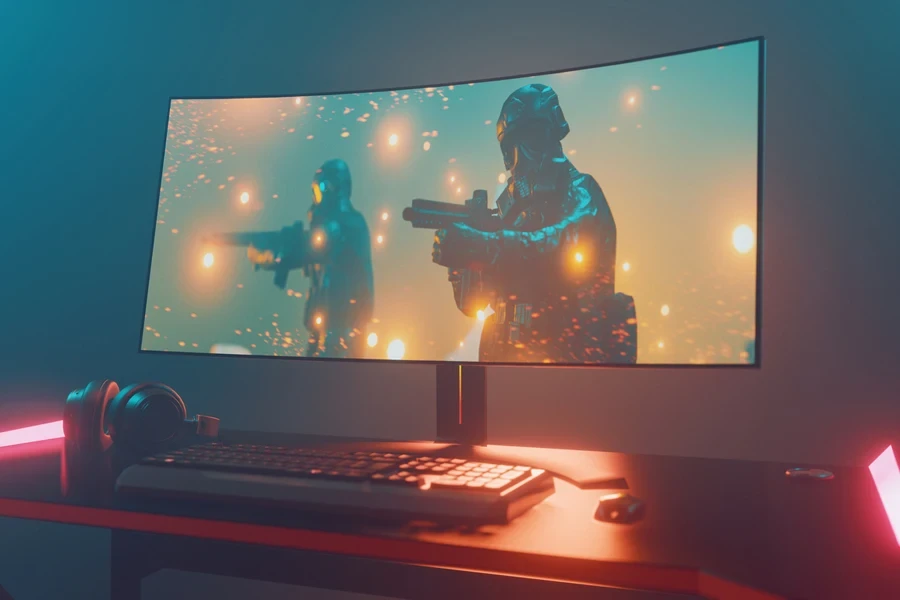
A 24- or 27-inch curved gaming monitor with a gentle 1800R bend is the simplest way for new players to try the curve. Its Full HD picture (1920 × 1080) works well on everyday graphics cards, so buyers don’t need costly upgrades. A 144 Hz refresh rate plus 1 ms response keeps action smooth in shooters and racers.
HDMI 2.1 and DisplayPort 1.4 ports let users plug in a console or laptop with one cable. This model fits tight desks, sells quickly to students and cafés, and gives first-time gamers that wrap-around feeling without a big price tag.
2. QHD mid-size curve
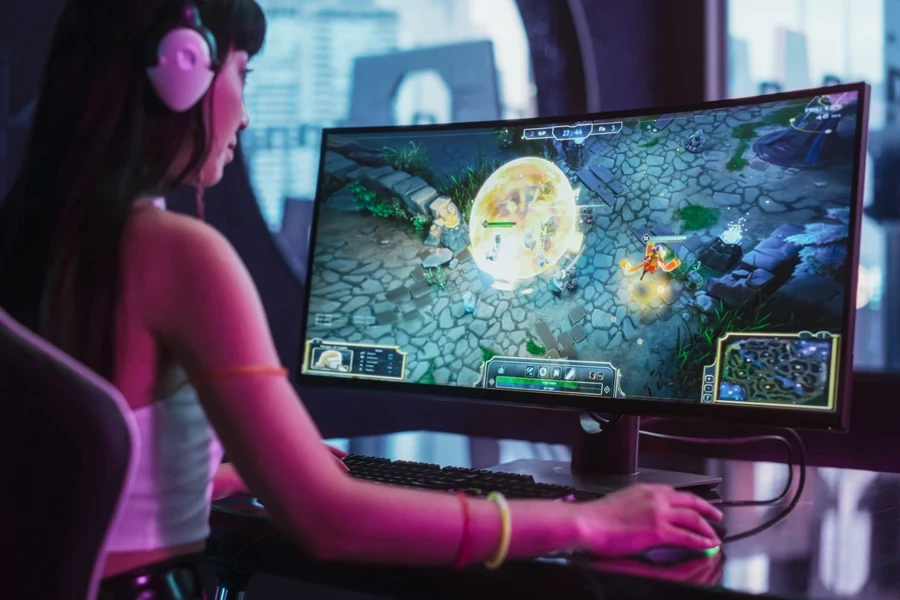
Need a screen you can game on at night and work on by day? Go for a 32-inch, 1500R Curved Gaming Monitor with crisp QHD (2560 × 1440) detail. An adaptive sync feature pairs its 165 Hz motion rate with the graphics card to kill tearing.
The IPS panel holds color even when you lean sideways, and a wide DCI-P3 color gamut brings brighter reds and richer greens to open-world maps. One tidy USB-C cable feeds power and video to a laptop, while a built-in blue-light filter keeps your eyes fresh after long spreadsheet marathons.
3. Ultrawide curve
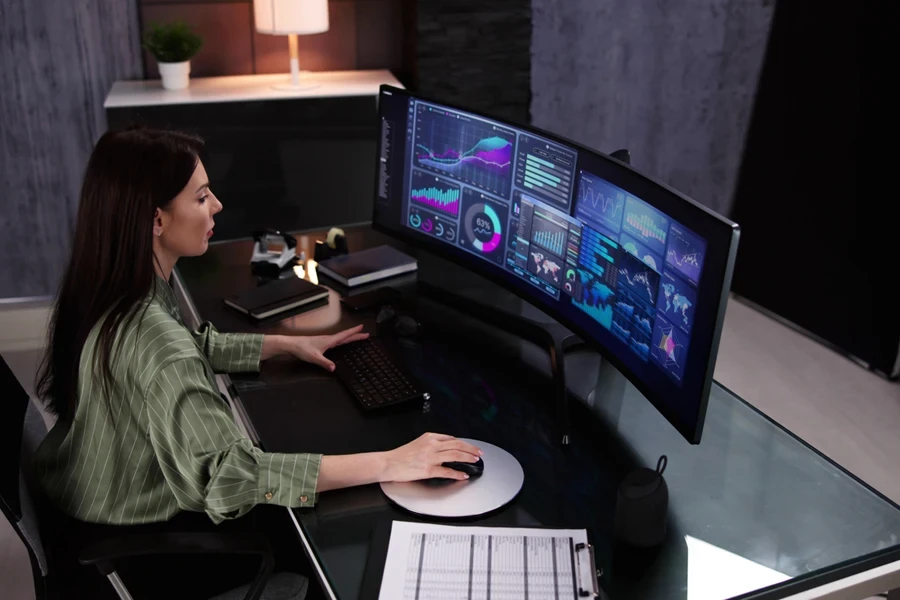
Stretch every map from corner to corner with a 34-inch Curved Gaming Monitor shaped into a sweeping 1500R arc and a cinema-wide 21:9 aspect ratio. The 3440 × 1440 picture pairs with a 240 Hz motion rate, so fast turns stay sharp.
A deep-black VA panel lifts shadow detail, while a wide color gamut makes lush greens and bright reds pop. Picture-by-picture mode lets users run two PCs side-by-side, and a height-adjustable stand fits any desk. One-tap Game Mode and a flicker-free backlight seal the deal for streamers and creators who need a big space without losing focus.
4. Super-ultrawide curve
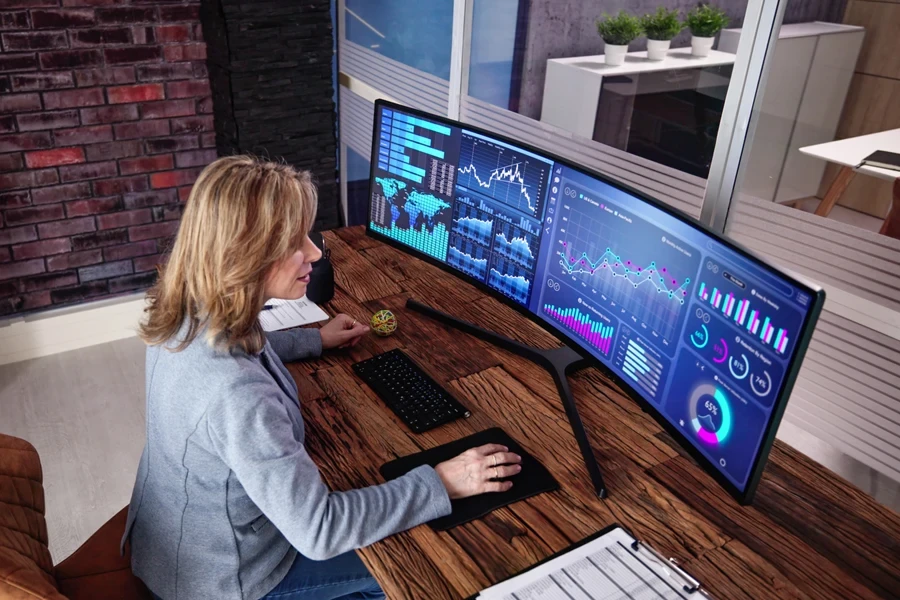
Turn your desk into a cockpit with a 49-inch Curved Gaming Monitor that wraps a deep 1000R arc across a wide 32:9 canvas. The dual-QHD picture (5120 × 1440) gives you the room of two 27-inch screens but without a bezel break. A 240 Hz frame rate and 1 ms response time keep racing sims and shooters butter-smooth, while an HDR1000 badge pumps out bright highlights.
The built-in KVM switch lets players switch between a work laptop and a gaming tower by tapping one button. Add a sturdy VESA mount and soft RGB backlight glow, and this super-ultrawide curve becomes the heart of any serious gaming desk setup.
5. OLED Curve

Drop jaws with an OLED Curved Gaming Monitor in a sharp 27- or 34-inch size and a snug 1800R bend. Each pixel lights itself, so blacks look ink-deep and bright spots sparkle—no back-light bleed at all. A blister-fast 240 Hz motion rate and near-instant 0.03 ms response turn quick aim flicks into clean hits.
Per-pixel dimming keeps shadow detail clear, while an anti-glare coating cuts reflection in bright rooms. Built-in burn-in protection shifts static icons to guard the screen, and a slim stand leaves space for a compact gaming desk. For players chasing top contrast and speed, this OLED curve sits at the peak of display tech.
What to consider when choosing a curved gaming monitor
1. Pick a curve radius that one’s eyes can handle
This tight 1000R bend pulls the edges almost to your shoulders, wrapping the full field of view and easing eye strain in long gaming marathons. A softer 1800R arc feels more like a flat panel with gentle depth, which is good if the consumer intends to share the screen for movies or split-screen work.
2. Make the motion seamless
To avoid picture stuttering that will make consumers unsatisfied and return the monitors, go for a screen with a high refresh rate—144 Hz is solid, and 240 Hz feels like butter. That way, they can team that speed with adaptive sync (look for FreeSync or G-Sync) so the monitor and graphics card march in step, and tearing disappears.
3. Check picture quality
If you want sharp and true colors, then check the panel type. An IPS panel keeps color steady even when a consumer sits off-center. A VA panel shows deeper blacks with a high contrast ratio. An OLED screen tops both with perfect black levels and quick pixel change. Make sure the monitor covers full sRGB or wider DCI-P3 color for bright reds and greens, and look for HDR support so highlights pop.
4. Check the ports
Look at the plugs on the back. You want one HDMI 2.1 and one DisplayPort 1.4 for fast video. A handy USB-C port lets buyers run power, data, and the picture through one easy cable. Extra USB slots turn the monitor into a small USB hub for a mouse and keyboard. An audio jack lets gamers add speakers later.
5. Make sure the stand fits the desk
A wobbly base spoils the whole setup. Pick a height-adjustable stand so users can lift or lower the screen to eye level. A quick tilt and swivel feature lets them angle the view without moving the chair. If buyers plan a wall arm, check for a VESA monitor mount (usually 100 × 100 mm) on the back.
Rounding up
Gamers want deeper play, home workers want fewer screens, and the curved gaming monitor answers both calls. The market is rising fast, the tech is simple to explain, and suppliers on Alibaba.com are ready to ship samples to eager retailers. Pick the curve radius, motion speed, and port mix that match your buyers’ preferences, place a small test order, and then run a live demo or short unboxing clip on social media. Watch how quickly the bend grabs attention and boosts your sales in the year ahead.

